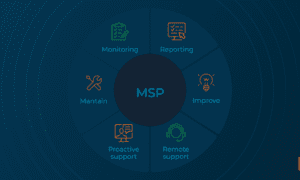Same house, two very different levers. A home equity loan adds a fixed‑rate second mortgage on top of your existing loan; a refinance replaces your current mortgage with a larger first lien. The winner depends on three things: your current first‑mortgage rate, how long you’ll keep the home, and whether you want a lower monthly payment or lower lifetime interest—you rarely get both. For borrowers wanting side‑by‑side payment and APR comparisons before committing, platforms like Tiger Loans can help map options to your budget and timeline.
Quick way to frame it
- Keep a great first‑mortgage rate?
Don’t touch it. Add a fixed‑rate home equity loan for a known lump sum and predictable payment. - Current first‑mortgage rate is high?
Refinance into one new loan if the new rate and costs beat your blended cost—and you’ll stay long enough to break even. - Costs are phased or uncertain?
Consider a HELOC with the ability to lock portions at a fixed rate.
When a refinance usually wins
- Material rate drop. The new first‑lien rate clearly undercuts your current mortgage plus any second‑lien rate.
- You want one payment. Simpler budgeting, fewer fees over time.
- Large cash need. First‑lien pricing often beats second‑lien rates for bigger amounts.
- You’ll live there long enough. Closing costs are higher; savings need time to outrun them.
Red flag: Term reset. Rolling 8 years remaining into a fresh 30 lowers the payment but can raise total interest unless you prepay.
When a home equity loan usually wins
- You already have a stellar first‑mortgage rate. Protect it.
- You need a defined lump sum. Roof, tuition, debt consolidation—fixed rate, fixed term keeps you honest.
- You want shorter amortization. Five to ten years clears the balance fast and limits interest.
Guardrail: Don’t stack payments so high that one bad month breaks the plan. Choose the shortest term you can comfortably afford, then automate a small extra principal.
Cost math that actually decides it
- APR vs. APR, not just rates. Include lender fees, appraisal, title, recording, points, annual HELOC fees, and any early‑closure fees.
- Break‑even in months. Divide total costs by monthly savings to see how long it takes to win back fees.
- Same‑payoff comparison. If a refinance restarts the clock, model extra principal so it pays off when your current loans would. Now compare total interest apples‑to‑apples.
Eligibility levers (what underwriters care about)
- Combined loan‑to‑value (CLTV). Many lenders cap around 80%–85%. Lower CLTV = better pricing.
- Debt‑to‑income (DTI). Staying ≤ 40% after the new payment keeps approvals clean.
- Credit score. 680+ unlocks stronger pricing; 620–679 workable with conservative CLTV/DTI.
- Income stability. W‑2 is simpler; self‑employed borrowers should prep two years of returns, a YTD P&L, and business statements.
Special case: eligible veterans
If you qualify, you may be eligible for VA Loans that offer favorable terms compared with many conventional products. In some scenarios, a VA cash‑out or streamlined option can beat both a second lien and a standard refinance on total cost and flexibility.
Timelines and funding
- Home equity loan: Typically 2–6 weeks. Expect appraisal/valuation, title, and a brief rescission window before funds release.
- Refinance: Similar 2–6 weeks, sometimes longer because the package is larger and payoff coordination is required.
Risks to price in (no fluff)
- Your home is collateral. Missed payments risk foreclosure—budget for the worst month, not the best.
- HELOC rate risk. If you choose a line, model payments a few percentage points higher and confirm post‑draw amortization in writing.
- Fee drag. A tiny rate win can be wiped out by fees. If the break‑even is too far out, pass.
- Term creep. Lower payment today, higher lifetime cost tomorrow. Use auto‑prepay to hold your payoff date.
Decision checklist
- Is the new first‑lien APR clearly better than my blended cost?
- Will I live here long enough to beat fees?
- Do I need flexibility (HELOC) or certainty (fixed HEL/refi)?
- What’s my stress‑case budget? Still safe if income dips or expenses spike?
- What’s my exit plan? Prepay schedule, sale, or future refi—price each path.
Bottom line:
- Keep a great first‑mortgage rate and add a fixed home equity loan for known costs.
- Refinance only when the APR savings are real, the break‑even is reasonable, and you won’t quietly add decades to your debt.
- Whichever you pick, automate extra principal and keep a cash cushion so the plan survives noisy markets and messy months.





























